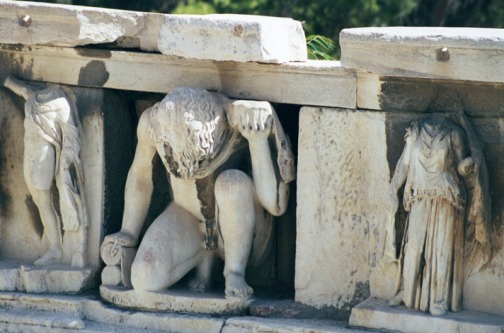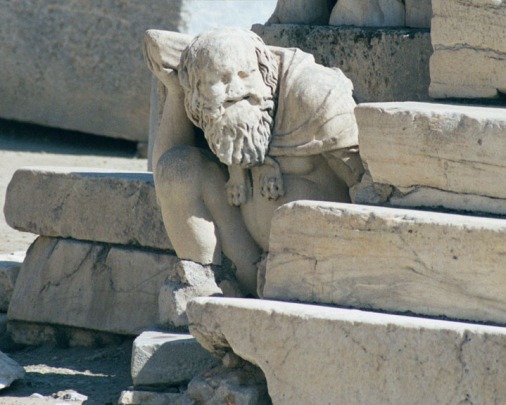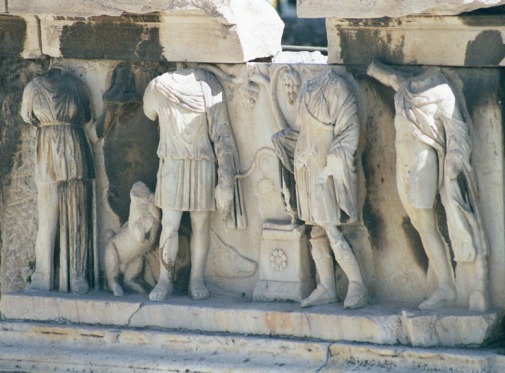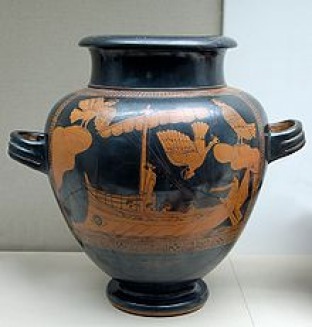Welcome to Dionysus
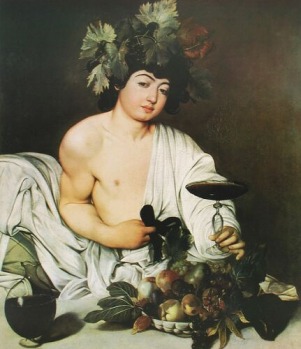
Before we begin the tour, I thought we should give a little background on this theater! It was built for the God, Dionysus! He was the Greek God of Wine and Fertility and was the son of Zeus and Semele, a mortal. He had a tricky birth. I am sure you know that Zeus was married to Hera... well, because she was extremely jealous and angry about the birth of Zeus' child through another woman, she disguised herself and went to Semele and tried to make her believe that Zeus wasn't the father of her unborn baby. Naturally, Semele was upset. So she conviced Zeus to show himself in all of his glory to prove that he really was God. Because she is mortal, she dies when Zeus turns into Mr. Lighting bolt. Humans can't survive looking at him in his Godlike state. Zeus takes the unborn baby and sews him onto his thigh until he is born. Thus, Dionysus has two "mothers." This is so dramatic, it makes perfect sense that the first theater was built here and named after him.
Actually, drama was first presented in a festival for him. Every March the Greeks honored the Gods with Festivals. Dionysus' festival quickly became the most popular after it was inaugurated. Dionysus was worshiped for his fertility. The Greeks wished to not only promote fertility, but to guarantee the return of spring. Who would have thought they would be so superstitious? It must be a theater thing.
Actually, drama was first presented in a festival for him. Every March the Greeks honored the Gods with Festivals. Dionysus' festival quickly became the most popular after it was inaugurated. Dionysus was worshiped for his fertility. The Greeks wished to not only promote fertility, but to guarantee the return of spring. Who would have thought they would be so superstitious? It must be a theater thing.
The Stage
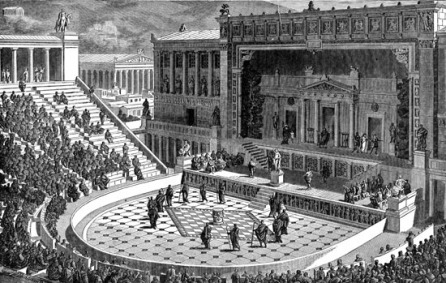
Isn't this theater amazing! I love spending time here! The only thing better than viewing it in the day time, is seeing a show here at night! You had better be reading up on Oedipus, because we will be seeing it here, in this magical place, at night! I hope you are as excited as I am.
Can you see the orchestra? It was the place where the actors dance. It it located at the bottom of the hill so audience members can watch the performance. Do you see the skene in the background? Originally it was a tent used for storing props, but after many directors started working the presence of the tent into the show (oftentimes the script called for buildings) it because a permanent fixture of the stage.
Can you see the orchestra? It was the place where the actors dance. It it located at the bottom of the hill so audience members can watch the performance. Do you see the skene in the background? Originally it was a tent used for storing props, but after many directors started working the presence of the tent into the show (oftentimes the script called for buildings) it because a permanent fixture of the stage.
The Audience
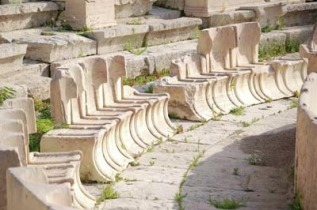
Originally these seats were made of wood, as was the whole theater, but in 325 B.C., a stone version was built in its place. You can see how vast the audience seating is. Did you know that it can seat between 14,000 and 17,000 people?
If you visit this theater today, 2010, you will see the remnants of Roman architecture in the ruins. In the year 61, emperor Nero (the last of the Roman emperors) tried to renovate the decaying theater. But if you visit this magnificent theater in the year 2015, you will see a restored theater. Greek authorities started renovations in 2009. So exciting!
If you visit this theater today, 2010, you will see the remnants of Roman architecture in the ruins. In the year 61, emperor Nero (the last of the Roman emperors) tried to renovate the decaying theater. But if you visit this magnificent theater in the year 2015, you will see a restored theater. Greek authorities started renovations in 2009. So exciting!
The Architecture
While we aren't going to visit the Theater of Dionysus when we explore Roman theater, I thought it was important for you to see the Roman influences this theater undertook when emperor Nero refurbished Dionysus. So buckle up, we are going to travel into the future for a minute.
When this theater got its makeover, statues were made to show Dionysus during his life. Because this theater was named for him, I thought we would take a look. What's a little time travel, anyway? The following scenes are representations of Dionysus' life. Beautiful, aren't they? Isn't it amazing to see Roman theater and Grecian theater together in one place?
When this theater got its makeover, statues were made to show Dionysus during his life. Because this theater was named for him, I thought we would take a look. What's a little time travel, anyway? The following scenes are representations of Dionysus' life. Beautiful, aren't they? Isn't it amazing to see Roman theater and Grecian theater together in one place?
The Art
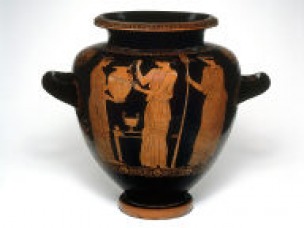
While we are visiting Greece, be sure to take a look at the stamnoses. These wine jars were the main source of art for Grecians. These pots and jars were painted on, depicting scenes from mythology and theater.
It has been said that since they were oddly shaped, they were mostly used for mixing things and stirring things, but if they were in my house, I would use them for decoration.
It has been said that since they were oddly shaped, they were mostly used for mixing things and stirring things, but if they were in my house, I would use them for decoration.
